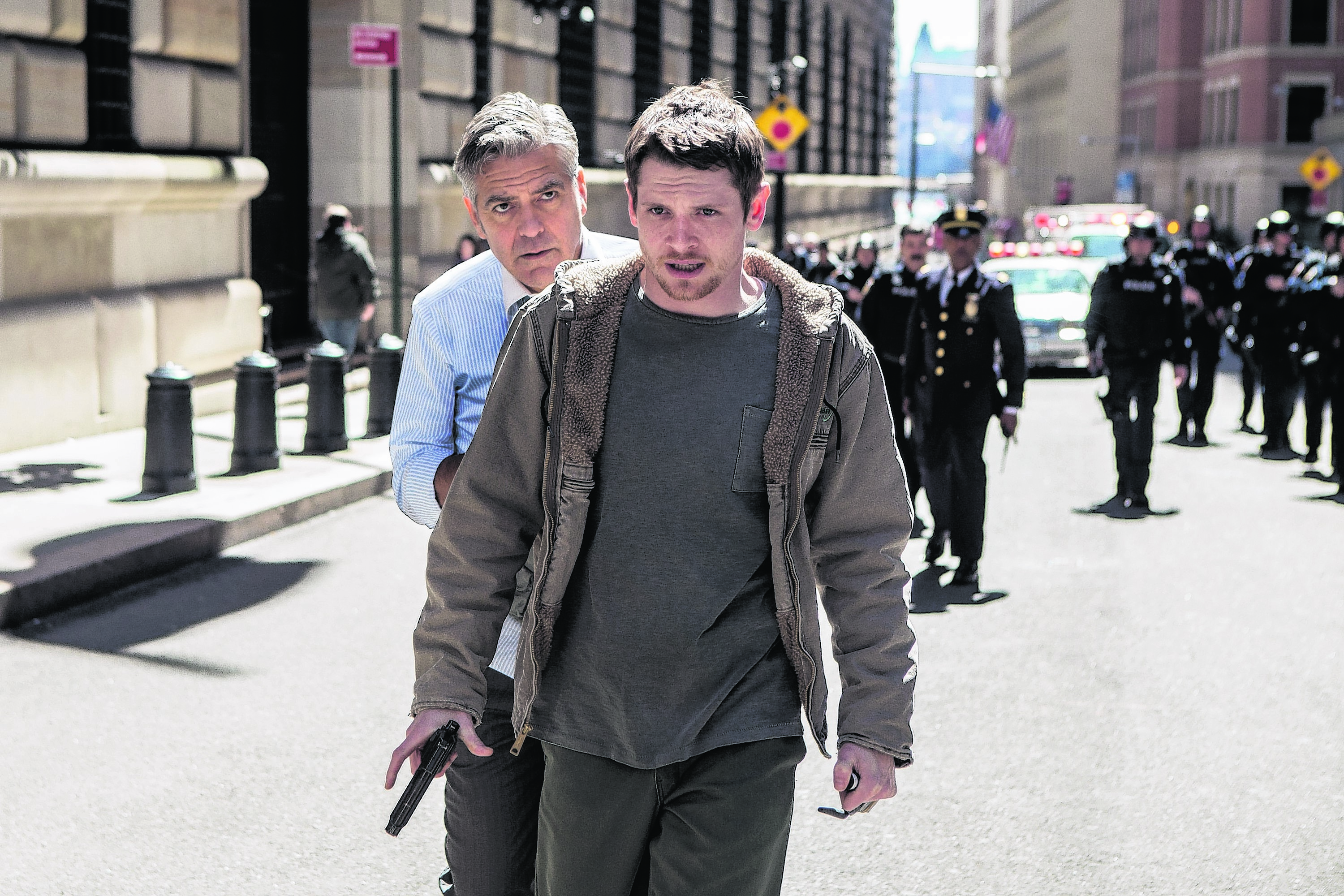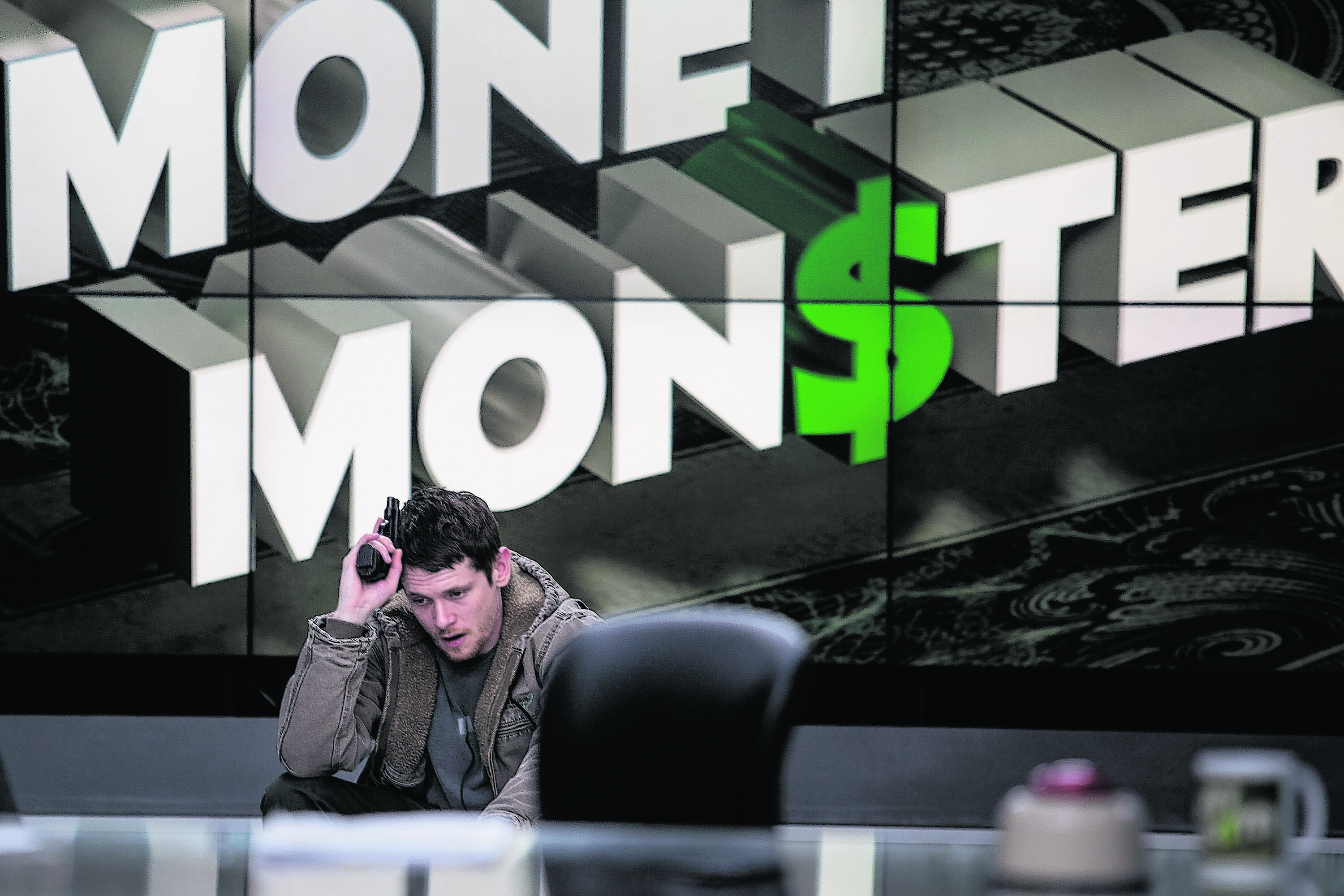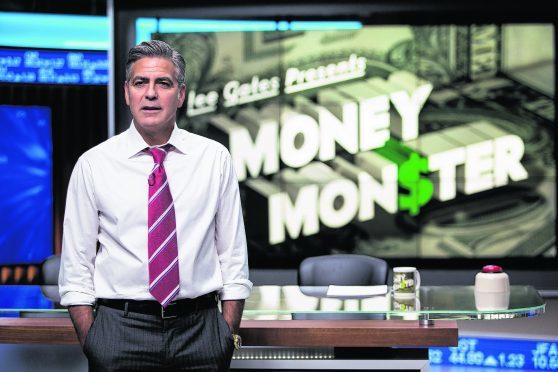Money talks – and it says exceedingly ugly things – in Jodie Foster’s tense hostage thriller, which unfolds largely in real time during a live television broadcast.
Anchored by strong performances from George Clooney, Julia Roberts and Derbyshire-born rising star Jack O’Connell, Money Monster overcomes some preposterous plot twists and a noticeable lull in the middle act to keep us on the edge of our seats.
The opening 30 minutes are particularly lean and mean, capturing the frenetic whirl and chaos of a TV studio as staff behind and in front of the cameras prepare for show time.
Scriptwriters Jamie Linden, Alan DiFiore and Jim Kouf pull off a jaw-dropping coup with the introduction of the hostage taker’s pregnant girlfriend (Emily Meade), who we expect to tearfully plead for him to down his weapon for the sake of their unborn child.
In these moments, Money Monster kicks like a mule and knocks the stuffing out of us.

However, once the central plot of skullduggery reveals its intentions, Foster’s iron-tight grasp on realism slackens and she is compelled to take risky gambles to engineer a slam-bang finale.
Some of them don’t pay off.
Lee Gates (Clooney), gregarious host of a network television show which surveys the movers and shakers in the financial market, prepares to interview Diane Lester (Caitriona Balfe), chief communications officer of IBIS Global Capital, whose complex trading algorithm glitched overnight, losing investors 800 million dollars.
With IBIS CEO Walt Camby (Dominic West) currently unavailable, Diane is concerned that she will be made a scapegoat.
“We don’t do ‘gotcha journalism’ here. We don’t do journalism, period,” quips Lee’s long-suffering producer Patty Fenn (Roberts).
No sooner has Lee delivered his opening monologue than a labourer, Kyle Budwell (O’Connell), who has just lost his entire life savings in the IBIS crash, storms the set brandishing a gun.
Cameras continue to roll as Lee dons an explosives vest and Kyle threatens to detonate unless someone from IBIS can explain how their system was compromised.
Patty tries to defuse the stand-off as viewing figures soar, aided by her producer-at-large, Ron Sprecher (Christopher Denham), and cameraman Lenny (Lenny Venito).
“I came in here knowing this show is only going to end one way,” Kyle informs his terrified hostage.

Money Monster is a cautionary tale about the get-rich-quick mentality of a modern society that blindly trusts in technology to deliver rewards at the tap of an app.
Clooney and Roberts generate molten screen chemistry, even though she is just a voice in his ear for the majority of the film, and O’Connell maintains his accent as events escalate out of his nervous captor’s control.
The script’s barbs at voyeuristic reality TV draw blood, but sinewy subplots involving Icelandic hackers and social unrest in South Africa extend our suspension of disbelief beyond its credit limit.
